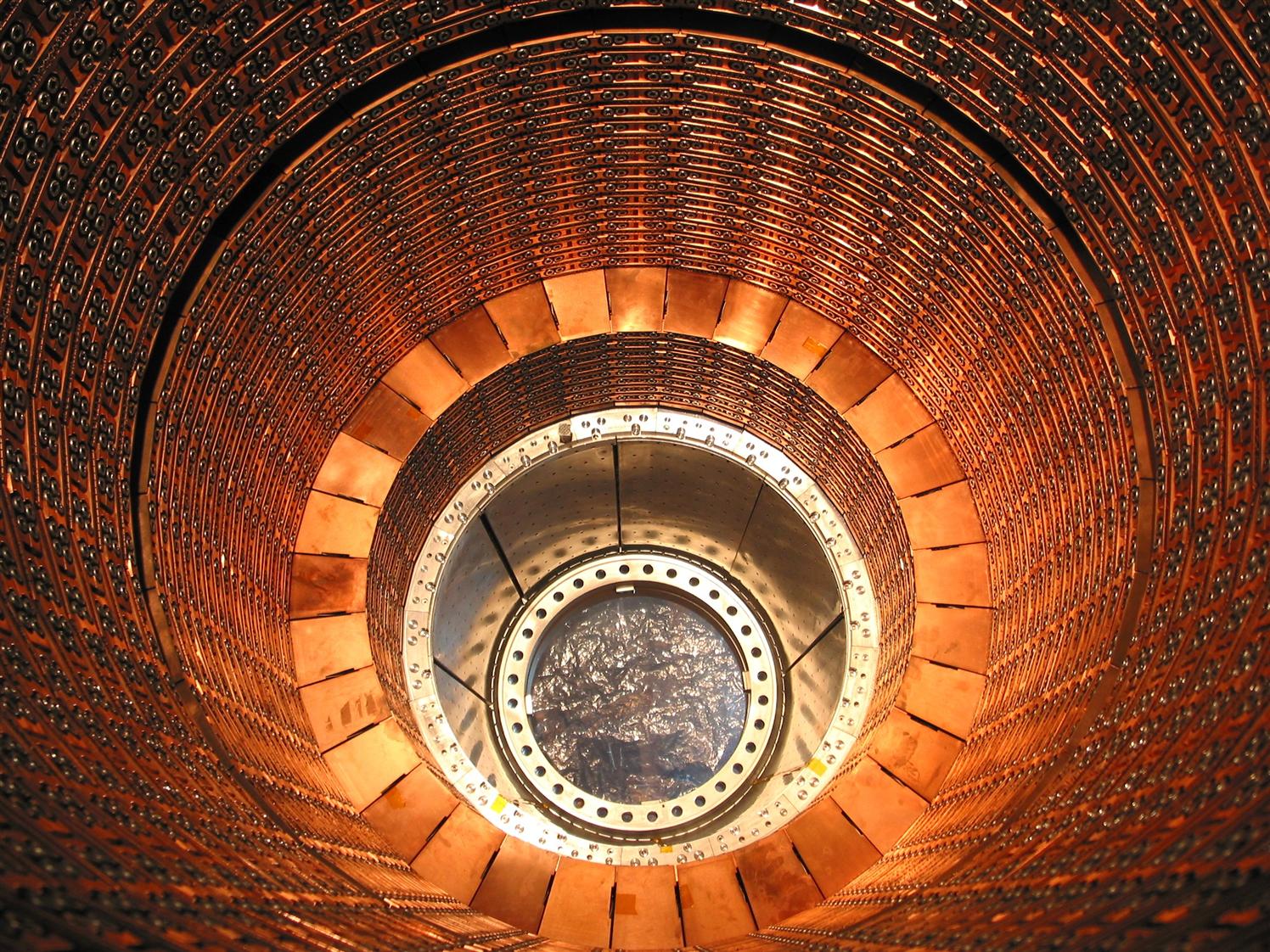Accelerators at CERN boost particles to high energies before they are made to collide inside detectors. The detectors gather clues about the particles – including their speed, mass and charge – from which physicists can work out a particle's identity. The process requires accelerators, powerful electromagnets, and layer upon layer of complex subdetectors.
Particles produced in collisions normally travel in straight lines, but in the presence of a magnetic field their paths become curved. Electromagnets around particle detectors generate magnetic fields to exploit this effect. Physicists can calculate the momentum of a particle – a clue to its identity – from the curvature of its path: particles with high momentum travel in almost straight lines, whereas those with very low momentum move forward in tight spirals inside the detector.
Modern particle detectors consist of layers of subdetectors, each designed to look for particular properties, or specific types of particle. Tracking devices reveal the path of a particle; calorimeters stop, absorb and measure a particle’s energy; and particle-identification detectors use a range of techniques to pin down a particle's identity.
Tracking devices
Tracking devices reveal the paths of electrically charged particles as they pass through and interact with suitable substances. Most tracking devices do not make particle tracks directly visible, but record tiny electrical signals that particles trigger as they move through the device. A computer program then reconstructs the recorded patterns of tracks.
One type of particle, the muon, interacts very little with matter – it can travel through metres of dense material before being stopped. Muons therefore pass easily through the inner layers of a detector, which is why muon chambers – tracking devices specialised in detecting muons – usually make up the outermost layer of a detector.
Calorimeters
A calorimeter measures the energy a particle loses as it passes through. It is usually designed to stop entirely or “absorb” most of the particles coming from a collision, forcing them to deposit all of their energy within the detector, thus measuring their full energy. Calorimeters have to perform two different tasks at the same time – stopping particles and measuring energy loss – so they usually consist of layers of different materials: a “passive” or “absorbing” high-density material – for example, lead – interleaved with an “active” medium such as plastic scintillators or liquid argon.
Electromagnetic calorimeters measure the energy of electrons and photons as they interact with the electrically charged particles in matter. Hadronic calorimeters sample the energy of hadrons (particles containing quarks, such as protons and neutrons) as they interact with atomic nuclei. Calorimeters can stop most known particles except muons and neutrinos.

Particle-identification detectors
In addition to measuring a particle's momentum in tracking devices and its energy in calorimeters, physicists have further methods of narrowing down its identity. These methods all rely on measuring a particle's velocity, since this, in combination with the momentum measured in the tracking devices, helps to calculate a particle's mass and therefore its identity.
Velocity can be measured using several methods. The simplest is to measure how much time it takes for a particle to travel a certain distance, using precise time-of-flight detectors. Another method looks at how much a particle ionises the matter that it passes through, as this is velocity-dependent and can be measured by tracking devices.
If a charged particle travels faster than light through a given medium, it emits Cherenkov radiation at an angle that depends on its velocity. Alternatively, when a particle crosses the boundary between two electrical insulators with different resistances to electric currents, it emits transition radiation, the energy of which depends on the particle's velocity.
Collating all these clues from different parts of the detector, physicists build up a snapshot of what was in the detector at the moment of a collision. The next step is to scour the collisions for unusual particles, or for results that do not fit current theories.
